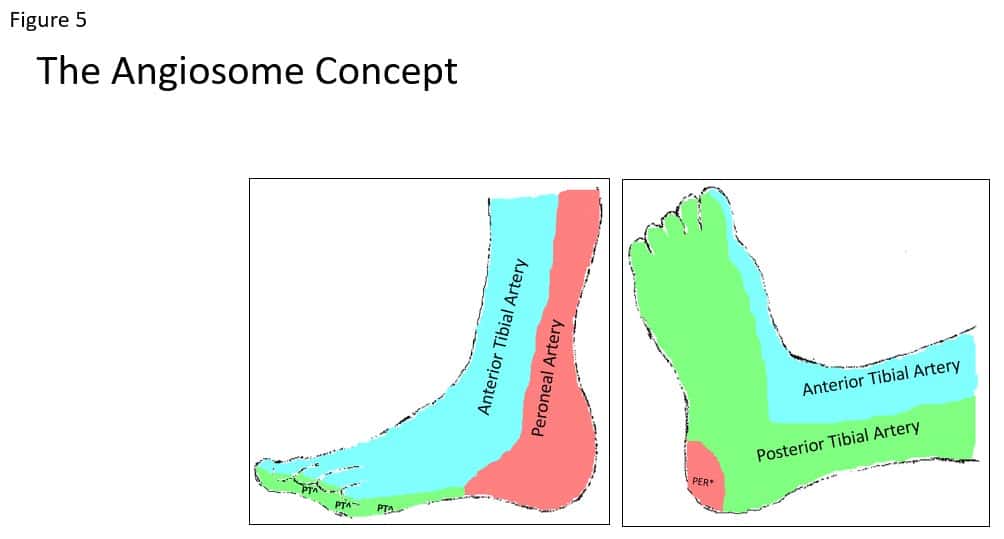In-Line Flow: Assuming the limb is at all salvageable, the ischemic limb should be revascularized to facilitate wound healing, decrease ischemic pain, and preserve the functional limb. Both surgical and percutaneous revascularization options should be considered in CLI. Classically, CLI revascularization aims to establish at least 1 patent vessel that provides in-line flow to the foot.
Angiosome Concept: The angiosome concept is more ambitious in that it seeks to establish not only in-line flow to the foot but also direct in-line flow through the vessel perfusing the territory in which the wound resides (Figure 5). However, the benefits of seeking “direct” revascularization to a particular angiosome of interest, as opposed to “indirect” revascularization while supported by registries and meta-analysis, have yet to be verified in any high-quality randomized study. Nevertheless, many have adopted this practice given its intuitive appeal (32).

